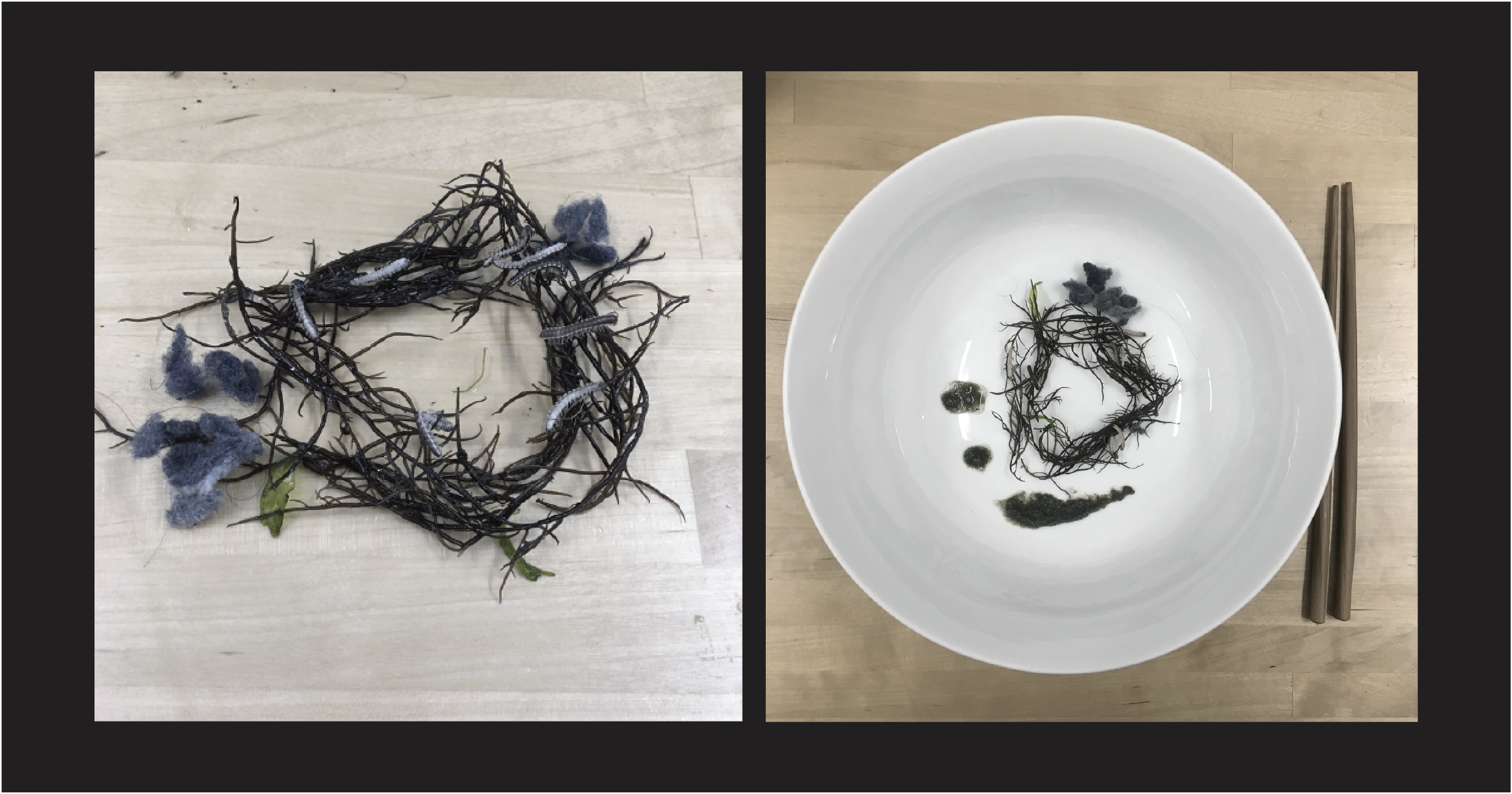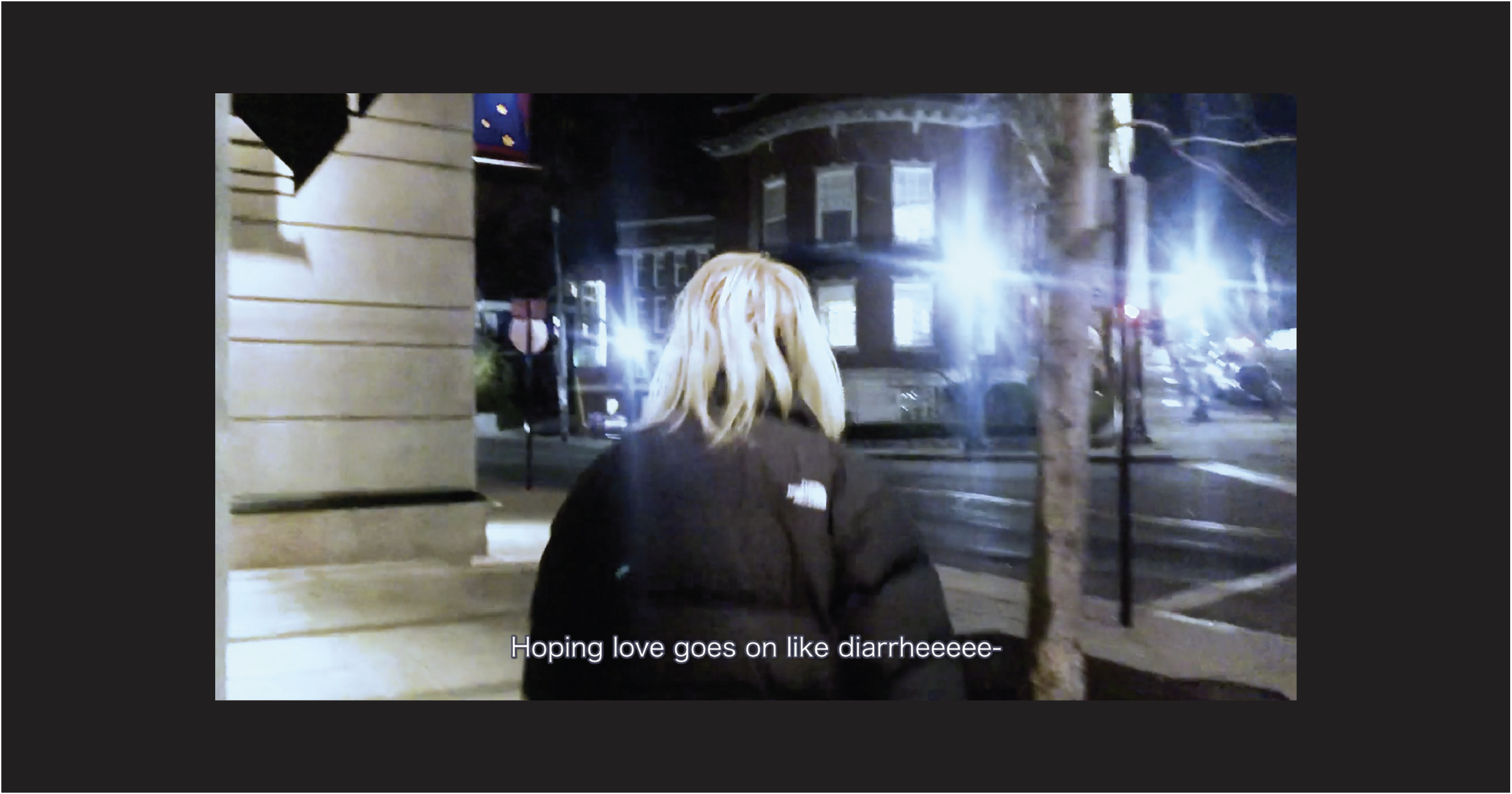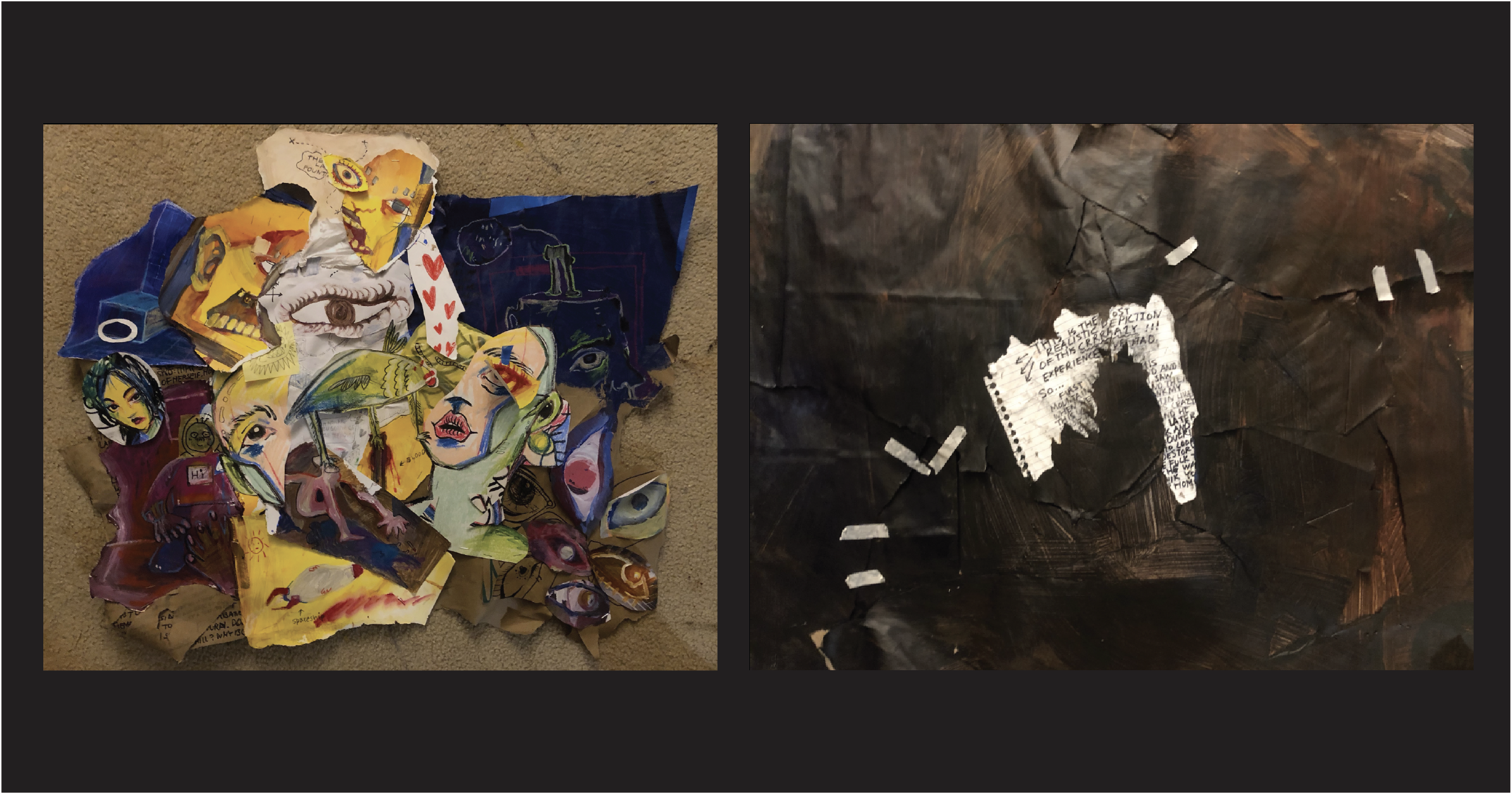Blood in the Louvre, Butt in Vimeo (B:L=B:V)
Rhode Island
School of Design
DM-1548-01
2020 Wintersession
DM-1548-01
2020 Wintersession
Have you ever watched a gore movie and rewound to the most
disturbing part over and over again? Do you follow Instagram accounts that are full
of disturbing 3D models? Have you ever googled weird medieval paintings and
shared them with friends? We, humans, make art that chills us to the bone and
we can’t take our eyes off of it. Thi studio course explores dark humor within
artistic context throughout history to understand its role and potential within
artistic practice.
In order to explore dark humor as an artistic methodology, we will start by questioning ‘dark’ imagination throughout history and the psychology behind it. The class will gain a deeper understanding of how dark humor has been used throughout history- from myths to memes; from the paintings of Hieronymus Bosch to the ‘Hi Stranger’ video. We will investigate how its usage varies between genres, traditions, time periods and cultures through class lectures, assigned readings, and guest speakers. The readings/viewing materials of broad range - from cognitive studies to contemporary web subculture; criminology studies to poems - will be provided for further discussion and exploration.
The majority of this course will focus on multiple hands-on workshops such as material workshops and discomfort workshops, for further exploration related to the theme of this course. Students will present work regularly in class for critique. The work can take any form - students are encouraged to fold the topics and themes discussed in the course into their own practice. By the end of the course, students will be able to grasp the complex and changing symbology of elements of dark humor in relation to human experience, and comprehend their own place in that context in order to sharpen their critical capacity and sense of inquiry.
In order to explore dark humor as an artistic methodology, we will start by questioning ‘dark’ imagination throughout history and the psychology behind it. The class will gain a deeper understanding of how dark humor has been used throughout history- from myths to memes; from the paintings of Hieronymus Bosch to the ‘Hi Stranger’ video. We will investigate how its usage varies between genres, traditions, time periods and cultures through class lectures, assigned readings, and guest speakers. The readings/viewing materials of broad range - from cognitive studies to contemporary web subculture; criminology studies to poems - will be provided for further discussion and exploration.
The majority of this course will focus on multiple hands-on workshops such as material workshops and discomfort workshops, for further exploration related to the theme of this course. Students will present work regularly in class for critique. The work can take any form - students are encouraged to fold the topics and themes discussed in the course into their own practice. By the end of the course, students will be able to grasp the complex and changing symbology of elements of dark humor in relation to human experience, and comprehend their own place in that context in order to sharpen their critical capacity and sense of inquiry.
Meeting Times:
Th/F 1:00 PM - 6:00 PM
W 1:00 PM - 6:00 PM (1/15/2020)
W 1:00 PM - 6:00 PM (1/29/2020)
Location:
BUILD SPACE, 4th Floor CIT
Instructors:
Ji Yoon Chung, jchung15@risd.edu
Hee-Joon June Yoon, hyoon03@risd.edu
Th/F 1:00 PM - 6:00 PM
W 1:00 PM - 6:00 PM (1/15/2020)
W 1:00 PM - 6:00 PM (1/29/2020)
Location:
BUILD SPACE, 4th Floor CIT
Instructors:
Ji Yoon Chung, jchung15@risd.edu
Hee-Joon June Yoon, hyoon03@risd.edu
Workshop 1.
Material Workshop:
To rethink semiosis of objects and materials
Material Workshop:
To rethink semiosis of objects and materials
Prompt:
Choose one of the concepts:
(disgust, love, purity, guilt, formless, cycle, home, mutability)
and describe it in your own language. Start with the general definition and interpret it on your own terms. Bring in any material according to the personal interpretation. Keep in mind that the material you will bring in should be utilized in a way rather than sitting as a final product/object. Bring in any additional tool if it’s needed for utilizing the material of your choice.
Choose one of the concepts:
(disgust, love, purity, guilt, formless, cycle, home, mutability)
and describe it in your own language. Start with the general definition and interpret it on your own terms. Bring in any material according to the personal interpretation. Keep in mind that the material you will bring in should be utilized in a way rather than sitting as a final product/object. Bring in any additional tool if it’s needed for utilizing the material of your choice.
Student:
Christine C.
Christine C.

“Personal Triggers of Disgust: dead bugs - juxtaposition between crunchy and wet/squishy, certain sour smells”
Janice G.

“My original idea was to make a grid system out of soap. However, the soap were too fragile. when i took them out of the mold, it either collapsed, or was attached to the silicone mold because of the heating and burning”
Amos K.

“Play doh smeared around objects covering the form. Materiality of play doh allows to stick and cover the object changing the formal qualities of the object”
Workshop 2.
Exploring Sensory:
To elevate non-visual sensory elements as a means of art-making and storytelling
Exploring Sensory:
To elevate non-visual sensory elements as a means of art-making and storytelling
Prompt:
Based on your interpretation of the concepts, bring in any form of sound such as sound recordings, script to read live, instruments to make/play sounds; smell such as an object that has a certain smell, certain smell in a container, etc; or a tactile material. The material you bring in can evoke the sensory experiences mentioned earlier (auditory, tactile, olfactory) or synesthesia, which is a condition in which one or more senses are perceived.
Based on your interpretation of the concepts, bring in any form of sound such as sound recordings, script to read live, instruments to make/play sounds; smell such as an object that has a certain smell, certain smell in a container, etc; or a tactile material. The material you bring in can evoke the sensory experiences mentioned earlier (auditory, tactile, olfactory) or synesthesia, which is a condition in which one or more senses are perceived.
Bonnie C.

“I wanted to covey ‘home’ with a sense of smell. I chose four different smells I associate with home: tea tree oil, Palo Santo, pre-worm compost food scraps, and diesel”
Yiqun Z.

“I took the flour to class and recorded the sound. The unique, slightly off-putting sound of mixing the dough. For the final project, I want to write a rap song about love so this is a good starting point”
Workshop 3.
Storytelling:
To explore storytelling methods and the ways to incorporate sensory experiences that each student explored from previous workshop
Storytelling:
To explore storytelling methods and the ways to incorporate sensory experiences that each student explored from previous workshop
Re-thinking the concept of comic, tragic within personal or collaborative narrative Persona / Character building as a narrator/speaker.
Designing a world for your narrative
1. Lynda Barry's Four Minute Diary Exercise
Daily repetition changes the way you pay attention to your life. It fosters a living relationship with the world. Looking back over your diary, you will see patterns and begin to notice what you notice.
2. Exquisite Corpse Storytelling
After writing a short story, give your story to the person next to you. Read the story you just received from the person next to you. Visualize the story. It could be the character, the landscape, or anything. After the visualization is over, give it to the person next to you. See the visualization you just received. Write a short story based on the visualization. (REPEAT)
1. Lynda Barry's Four Minute Diary Exercise
Daily repetition changes the way you pay attention to your life. It fosters a living relationship with the world. Looking back over your diary, you will see patterns and begin to notice what you notice.
2. Exquisite Corpse Storytelling
After writing a short story, give your story to the person next to you. Read the story you just received from the person next to you. Visualize the story. It could be the character, the landscape, or anything. After the visualization is over, give it to the person next to you. See the visualization you just received. Write a short story based on the visualization. (REPEAT)

Final Project
Prompt:
Students will choose one of the projects from the course and develop it into a final project. The final project should show one’s artistic research, experimentation and effort.
Students will choose one of the projects from the course and develop it into a final project. The final project should show one’s artistic research, experimentation and effort.
Yiqun Z.



Nicola D.

Amos K.

Vanessa L.

Janice G.

Christine C.
